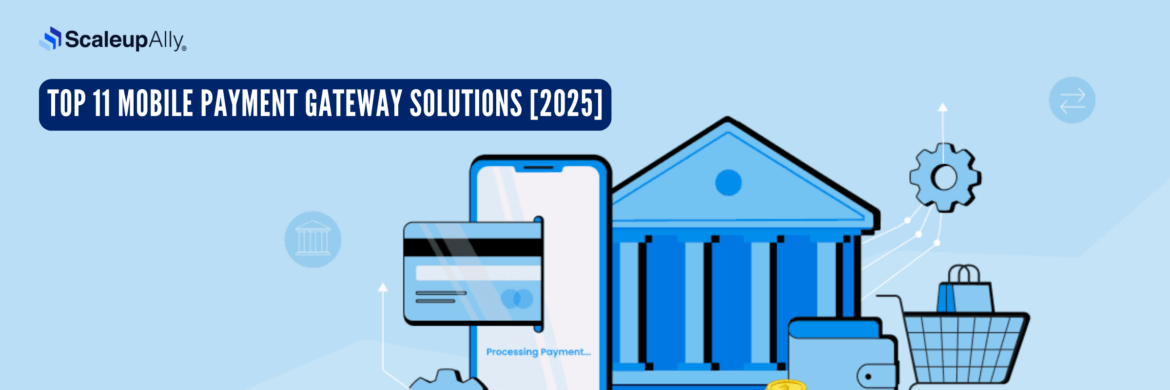
High-Risk Merchant Fees: Rates and Cost Saving Strategies
Suprabhat Sen | April 28, 2025 , 13 min read
Table Of Content
High-risk businesses lose money every month through credit card processing fees. Typically, these fees range between 1.5% and 3.5% of each transaction. While this percentage may seem small, it can add up over time, especially for businesses with high transaction volumes. If you’re running an online pharmacy, adult entertainment site or CBD business, you’re likely paying double or triple what a “regular” business does in fees.
The financial strain doesn’t stop there. These excessive costs ripple through your entire operation, squeezing profit margins until tough decisions (like raising prices and risk losing customers, cutting corners elsewhere, or simply absorbing the hit) become inevitable.
This doesn’t have to be your reality. The high-risk processing industry thrives on the belief that steep fees are simply “the cost of doing business” in certain industries.
In this guide, we’ll break down exactly what you’re paying for and some tactics high-risk businesses are using right now to keep more of what they earn.
Key Takeaways
- High-risk merchant fees can drain 3-15% of your revenue, depending on your industry, with additional hidden costs like reserves and chargebacks.
- Different fee structures (tiered, interchange-plus, flat-rate) work better for some business types and processing volumes. Choosing the wrong one could cost you thousands of dollars unnecessarily.
- Your industry impacts your rates. Adult entertainment and online gambling businesses face the highest fees (8-16%), while CBD and firearms merchants typically pay moderate high-risk rates (5-9%).
- You can actively lower your processing costs by improving your risk profile, negotiating based on volume, systematically reducing chargebacks and building strategic processor relationships.
- The right processing partner can help secure rates 1-3% below industry averages, potentially saving you thousands monthly on higher processing volumes.
How Much Do High-Risk Merchant Accounts Really Cost?
- How Much Do High-Risk Merchant Accounts Really Cost?
- Typical High-Risk Merchant Account Fees
- Variable vs. Fixed Account Fees
- High Risk Merchant Account Fee Structures Explained
- Industry-Specific Account Fee Differences
- Strategies to Reduce High-Risk Merchant Account Fees
- Partner with ScaleupAlly for Low-Cost & Reliable High-Risk Payment Processing
- Conclusion
- Frequently Asked Questions
High risk merchant account rates vary based on your industry, processing history and bank relationships. Before we discuss cost reduction strategies, here’s what these fees look like across different high-risk sectors:
| Fee Type | High-Risk Merchant |
| Processing Rate | 3.5% – 6.5% |
| Transaction Fee | $0.25 – $0.50 |
| Monthly Fee | $10 – $75 |
| Gateway Fee | $15 – $25 |
| Chargeback Fee | $25 – $50 |
| Early Termination Fee | $300 – $500 |
| Setup Fee | $100 – $300 |
Typical High-Risk Merchant Account Fees
Charges on high risk merchant accounts can leave even experienced business owners confused. Here’s a breakdown of the main high risk merchant account fees you’ll encounter:
- Transaction fees – These fees are tagged as the price of doing business. They come in two forms: a percentage of each sale (typically 3.5-10% for high-risk merchants versus 1.5-2.9% for standard businesses) plus a fixed amount per transaction ($0.25-$0.50). Adult content sites and online gambling platforms often face rates at the higher end due to their elevated chargeback risk.
- Setup fees – The cost to create your account ranges from $100-$500 for most high-risk merchants. Some processors waive this fee to win your business, but often make up for it with higher rates elsewhere. Nutraceutical companies and subscription services typically pay toward the higher end of this range.
- Chargeback fees – Perhaps the most painful of high risk merchant account fees. These $25-$100 penalties hit you each time a customer disputes a charge. They’re not just the fee itself. Excessive chargebacks can put you in monitoring programs with additional costs or even terminate your account.
- Monthly maintenance – Your processor charges $25-$75 monthly just to keep your account active, regardless of whether you process any payments. This covers account monitoring, statements, and customer service. Some processors bundle this with PCI compliance fees, while others list them separately.
- Annual card network registration – If you sell in certain high-risk categories like CBD products, telemarketing, or adult content, Visa and Mastercard require annual registration fees ranging from $500-$2,500. These non-negotiable fees go directly to the card networks and help them monitor high-risk merchant activity.
Variable vs. Fixed Account Fees
Not all fees in high-risk processing work the same way. Some directly reflect your business’s risk profile, while others remain consistent regardless of how your payment processor views you. Understanding this distinction can help you target your cost-cutting efforts effectively.
Fees That Fluctuate With Your Risk Level
- Processing rate percentages adjust based on your industry, chargeback history, and processing volume. A CBD business with a clean processing history might secure rates around 4.5%, while the same business with previous terminations could face 7-8% or higher.
- Reserve requirements vary with risk assessment. Processors might hold 5-20% of your transactions for 6 months or longer. These aren’t technically fees since you eventually receive the money, but they impact cash flow substantially.
- Rolling reserve duration changes with risk level. Lower-risk merchants might have funds held for 90 days, while higher-risk ones face 180+ day holds. This timeline often shortens as you build processing history.
- Batch fees sometimes increase for riskier merchants. These small charges (typically $0.10-$0.30) apply each time you close your daily transactions, but some processors double them for high-risk accounts.
- Chargeback thresholds tighten for higher-risk businesses. While a standard merchant might enter monitoring programs at a 1% chargeback ratio, high-risk merchants might face penalties at just 0.5%.
Fees That Remain Fixed With Your Risk Level
- Monthly statement fees typically stay consistent at $10-$25 regardless of your risk classification. These cover the cost of generating and delivering your processing statements.
- PCI compliance fees remain steady at $80-$120 annually for most merchants. These mandatory security standard fees don’t usually change based on risk assessment.
- Gateway fees stay fixed at $15-$25 monthly for access to payment processing software, regardless of whether you’re considered high or ultra-high risk.
- Annual card network fees remain consistent within specific industries. If you’re in adult content, for example, you’ll pay the same registration fee as others in that category regardless of your individual risk profile.
- IRS reporting fees hold steady at around $4.95 monthly for 1099-K generation, regardless of risk level.
High Risk Merchant Account Fee Structures Explained
The way processors charge high risk merchant fees varies, with each model offering some advantages depending on your business type. Understanding these structures can help you choose what aligns with your processing patterns and potentially help you save thousands of dollars annually.
1. Tiered Pricing Model
Tiered pricing groups your transactions into categories like “qualified,” “mid-qualified,” and “non-qualified” with increasingly higher rates for each tier.
Pros:
- Simple monthly statements that are easier to understand
- Predictable costs for businesses with consistent transaction types
- Often comes with better customer support packages
Cons:
- Lacks transparency about which transactions fall into which tiers
- Processors often shift transactions to higher-cost tiers without notice
- Can hide true processing costs within seemingly low advertised rates
Best for Business Type:
Smaller high-risk businesses processing under $20,000 monthly with predominantly card-present transactions. Gun shops and bail bond services often find this structure manageable due to its simplicity.
2. Interchange-Plus Pricing
This model charges the card network’s interchange rate plus a fixed markup (e.g., interchange + 1.5% + $0.25).
Pros:
- Transparent breakdown of exactly what the processor makes versus the card networks
- Generally lower overall high risk merchant account fees for businesses with larger transaction values
- Greater visibility into which transaction types cost you more
Cons:
- Complex monthly statements that can be difficult to decipher
- Multiple percentage rates across different card types create variable monthly costs
- Requires more financial sophistication to monitor effectively
Best for Business Type:
Medium to large high-risk businesses processing over $50,000 monthly. Online pharmacies, nutraceutical companies, and subscription-based services typically benefit most due to their diverse transaction mix.
3. Flat-Rate Pricing
A single fixed percentage plus transaction fee regardless of card type or processing method (e.g., 4.5% + $0.30).
Pros:
- Extremely simple to understand and predict
- No monthly fees in many cases
- No hidden costs or surprising charges
Cons:
- Usually higher overall high risk merchant account fees than other models
- No opportunity to benefit from lower-cost card types
- Often comes with processing volume limits
Best for Business Type:
New high-risk businesses with unpredictable sales volumes or seasonal operations. Dating sites, event ticket sellers, and small CBD retailers often start here for simplicity while establishing processing history.
4. Subscription Pricing
A membership-based model with a monthly fee plus interchange costs and a very small per-transaction fee.
Pros:
- Can deliver significant savings for high-volume businesses
- Eliminates percentage-based markups on large transactions
- Often includes better analytics and reporting tools
Cons:
- Monthly fee continues even during slow processing periods
- Setup typically requires longer contracts
- May include hefty early termination fees
Best for Business Type:
Established high-risk merchants processing over $100,000 monthly with higher average ticket sizes. Travel booking sites, high-end adult merchants, and offshore gambling operations often realize substantial savings with this structure.
5. Blended Pricing
Combines all fees into a single rate that covers interchange, assessments, and processor markup.
Pros:
- Simple financial planning with predictable costs
- Easy-to-read statements with minimal complexity
- Typically, no separate monthly fees
Cons:
- Often conceals excessive profit margins for the processor
- Difficult to comparison shop or verify competitive rates
- Usually more expensive for high-risk merchants long-term
Best for Business Type:
Micro-businesses in high-risk categories processing under $10,000 monthly who value simplicity above cost savings. Small psychic services, credit repair businesses, and smokeshops often choose this option to avoid administrative headaches.
Industry-Specific Account Fee Differences
The nature of your business influences what you’ll pay, often varying by thousands of dollars annually between sectors.
1. Adult Entertainment
Adult websites and services face some of the steepest processing costs in the high-risk ecosystem due to high chargeback rates and regulatory scrutiny:
- Processing rates typically range from 6-10%
- Chargebacks average $50-75 each
- Mandatory annual Visa/Mastercard registration fees of $500-1,000
- Reserve requirements commonly reach 10-15% of monthly volume
- Average effective rate (all fees combined): 8-12%
2. CBD and Cannabis Accessories
The evolving legal landscape around CBD creates unique fee structures:
- Processing rates typically range from 4.5-8%
- Setup fees averaging $250-500
- Monthly account fees of $25-50
- Limited processor options, reducing competitive pressure
- Average effective rate: 6-9%
3. Firearms and Ammunition
Gun dealers face substantial but relatively stable processing costs:
- Processing rates typically range from 4-6%
- Longer fund-holding periods (often 48-72 hours)
- Higher monthly minimum processing requirements
- Lower chargeback fees than most high-risk categories ($25-35)
- Average effective rate: 5-7%
4. Travel and Ticketing
Advanced booking businesses face unique fee structures:
- Processing rates typically range from 3.5-6%
- Higher reserve requirements (often 15-20%)
- Seasonal processing volume penalties
- Extended fund holding periods during peak seasons
- Average effective rate: 5-8%
5. Nutraceuticals and Health Supplements
Supplement sellers encounter variable pricing based on specific products:
- Processing rates typically range from 4-7%
- Recurring billing surcharges of 0.5-1%
- Higher per-transaction fees ($0.30-0.50)
- Product-specific risk adjustments
- Average effective rate: 5.5-8.5%
6. Online Gambling and Gaming
This ultra-high-risk category faces premium pricing:
- Processing rates typically range from 7-15%
- Setup fees of $500-1,000
- Monthly fees of $50-100
- Mandatory reserve requirements of 10-20%
- Average effective rate: 9-16%
Strategies to Reduce High-Risk Merchant Account Fees
Your high risk merchant account fees isn’t fixed, but negotiable, improvable and often inflated beyond what’s necessary. Implementing even two of these strategies could reduce your processing costs by 20-30% within a short period.
1. Improve Your Risk Profile
The quickest path to lower fees starts with becoming less risky in your processor’s eyes:
- Implement stronger fraud prevention tools like AVS (Address Verification Service) and CVV verification
- Develop clear return and refund policies displayed prominently on your website
- Create detailed product descriptions that set accurate customer expectations
- Institute proper customer service protocols with quick response times
- Document all customer interactions related to disputes
2. Negotiate Based on Volume
Your transaction volume gives you leverage that many merchants fail to use:
- Request tiered volume discounts at specific monthly processing thresholds
- Offer to consolidate multiple business accounts with one processor
- Provide statements showing growth trends to secure forward-looking rates
- Set up quarterly rate reviews tied to volume increases
- Compare competitive quotes on identical volume levels
3. Reduce Chargebacks Systematically
Since chargebacks heavily influence high risk merchant account costs, attacking them directly pays dividends:
- Implement a chargeback alert system that notifies you of disputes before they become formal chargebacks
- Use clear merchant descriptors on credit card statements so customers recognize charges
- Send order confirmation emails with customer service contact information
- Implement delivery confirmation for physical products
- Use 3D Secure authentication for transactions in high-fraud regions
4. Switch to Interchange-Plus Pricing
Shifting your fee structure can deliver immediate savings:
- Request a switch from tiered to interchange-plus pricing
- Negotiate the “plus” portion aggressively (the processor’s markup)
- Ask for removal of monthly minimums when switching models
- Request a detailed breakdown of non-negotiable versus negotiable fees
- Secure a written guarantee of interchange pass-through with no padding
5. Build Processor Relationships Strategically
Your longevity and communication with processors directly impacts rates:
- Schedule quarterly processing reviews rather than threatening to leave
- Provide advance notice of unusual transaction patterns
- Maintain processing history with at least two processors
- Build relationships with processor representatives, not just customer service
- Document all verbal rate promises in writing
Partner with ScaleupAlly for Low-Cost & Reliable High-Risk Payment Processing
Ready to lower your processing costs without compromising reliability? Explore our high risk payment gateway solution designed specifically for industries like CBD, adult entertainment, nutraceuticals, and more. ScaleupAlly helps businesses secure merchant accounts with rates below industry averages. Get a free statement analysis and a custom quote today—your savings start here.
Conclusion
Understanding high-risk merchant account costs is just the first step. Taking action makes the difference.
For a deeper dive into high-risk payment gateways, check out our guide on “High Risk Merchant Accounts“.
If you want personalized help navigating the complex world of high-risk processing? Our team analyzes your unique situation and connects you with the right solution for your business needs.
Frequently Asked Questions
Q: What is a high-risk merchant fee?
A high-risk merchant fee is the money you pay for payment processing if your business operates in industries with higher fraud or chargeback potential. These fees include higher processing percentages (3.5-15%), larger transaction fees, monthly account fees and often mandatory reserves.
Q: What’s the best fee structure for high-risk businesses?
Interchange-plus pricing typically offers the best value for established high-risk businesses processing over $25,000 monthly. Newer or smaller businesses might benefit from flat-rate pricing initially. The ideal structure varies based on your average transaction size and monthly volume.
Q: How can I reduce chargebacks and lower my fees?
Implement clear product descriptions, send order confirmation emails with support contact information, use recognizable billing descriptors, offer proactive customer service and consider chargeback prevention tools. Lowering your chargeback ratio below 1% can trigger automatic rate improvements.
Q: How much is the high-risk registration fee for Visa?
Visa’s high-risk registration fee typically ranges from $500-$1,000 annually depending on your specific industry category. Some industries like adult content, CBD and online gambling face mandatory registration, while others may avoid this requirement depending on their specific business model.
Related Blogs

15 Best Payment Gateways in the UAE in 2025 [Latest Updated]
Discover the top 15 payment gateway options in the UAE, including features, and pricing plans for businesses seeking secure online transactions.
Suprabhat Sen
Nov 25 ,
13 min read

Top 13 Mobile Payment Gateway Solutions [2025]
Discover the top 13 mobile payment gateways, with key features, pros, cons, and integration tips to help you choose the best solution for your app.
Suprabhat Sen
Nov 8 ,
18 min read

10 Best Ecommerce Payment Gateways in UAE
Explore the best ecommerce payment gateways in UAE. Compare providers, costs, compliance, and features to choose the right solution for your business.
Suprabhat Sen
Sep 30 ,
13 min read


